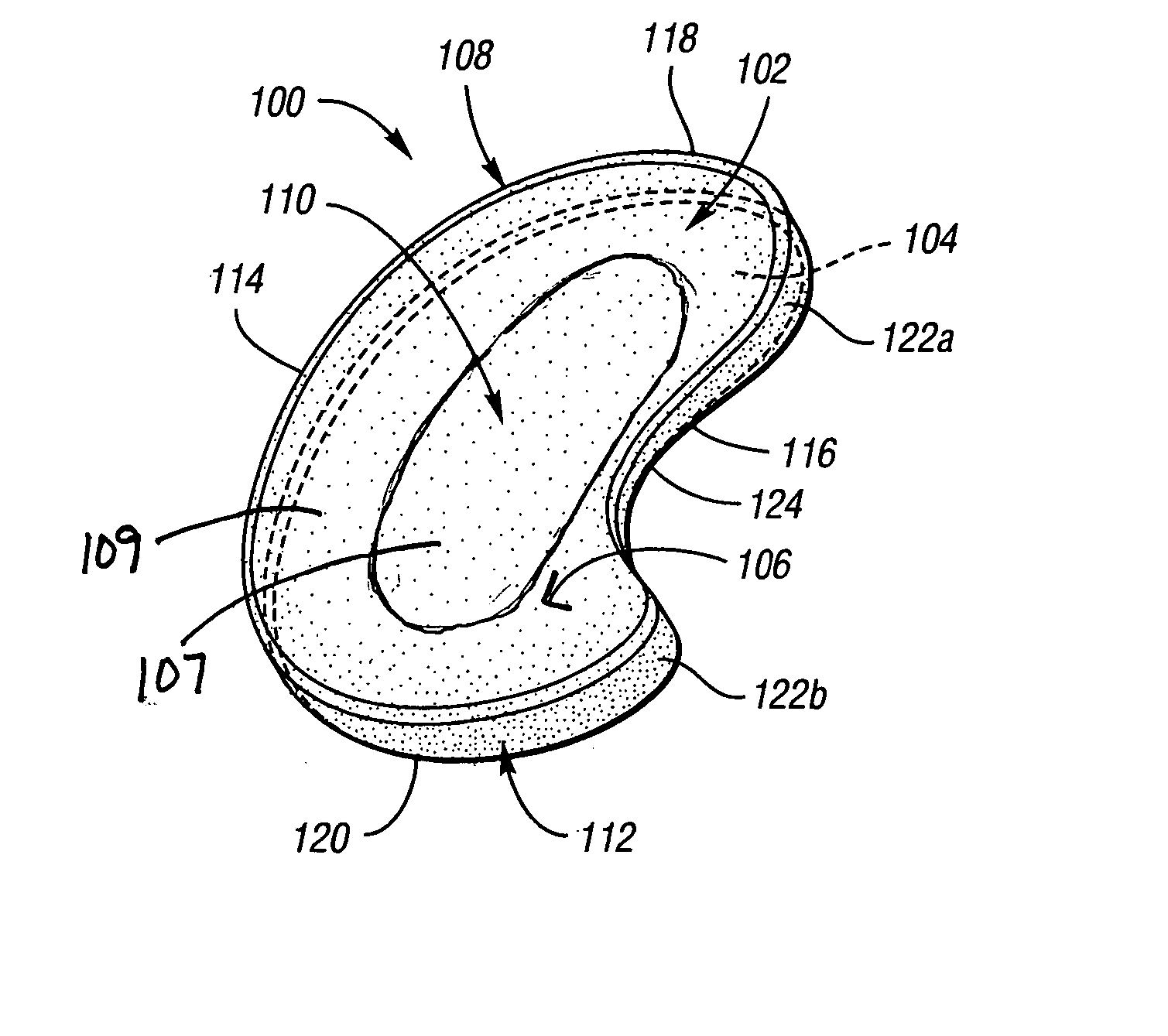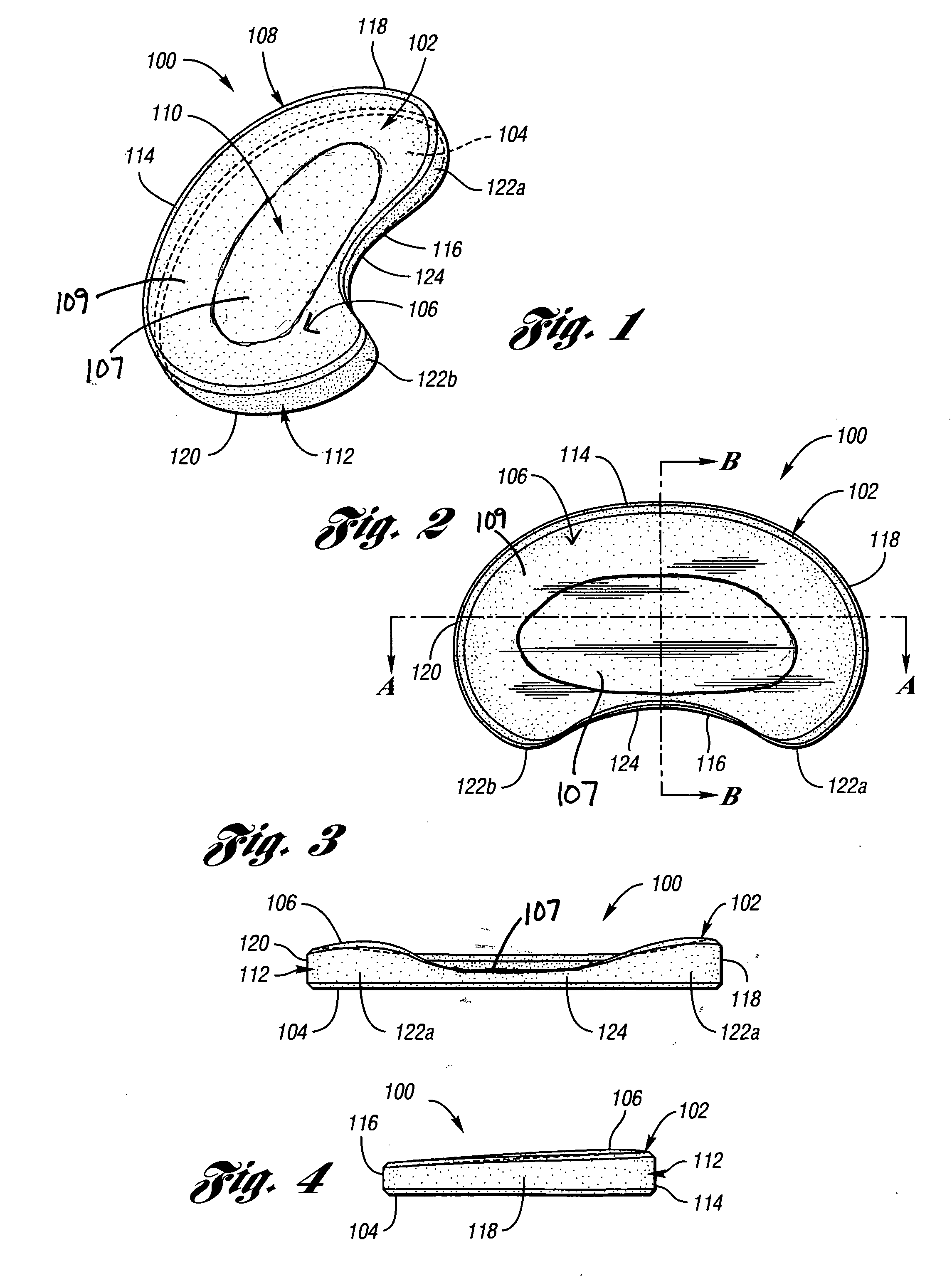Surgically implantable knee prosthesis
a knee joint and prosthesis technology, applied in the field of prosthetic devices, can solve the problems of chondromalacia, damage to the surface of the knee joint, degenerative tearing of the meniscal cartilage, etc., and achieve the effect of reducing any excessive motion
- Summary
- Abstract
- Description
- Claims
- Application Information
AI Technical Summary
Benefits of technology
Problems solved by technology
Method used
Image
Examples
Embodiment Construction
[0039] The prosthesis according to the present invention is designed to be surgically implantable into a body joint to replace damaged tissue therein. More particularly, the prosthesis of the present invention is a unicompartmental device suitable for minimally invasive, surgical implantation into a knee compartment requiring little or no bone resection. The knee compartment is defined by the space between a femoral condyle and the respective tibial plateau, in which a portion of the natural meniscus is ordinarily located. By effectively replacing worn articular material, the prosthesis of the present invention restores the normal joint alignment and provides a smooth bearing surface against which the femoral condyle can articulate. Degeneration of the femoral anatomy is significantly reduced because the conforming femoral surface of the prosthesis accommodates the complex shape of the femoral condyle in extension as well as in flexion. Further, it essentially eliminates articulatio...
PUM
 Login to View More
Login to View More Abstract
Description
Claims
Application Information
 Login to View More
Login to View More - R&D
- Intellectual Property
- Life Sciences
- Materials
- Tech Scout
- Unparalleled Data Quality
- Higher Quality Content
- 60% Fewer Hallucinations
Browse by: Latest US Patents, China's latest patents, Technical Efficacy Thesaurus, Application Domain, Technology Topic, Popular Technical Reports.
© 2025 PatSnap. All rights reserved.Legal|Privacy policy|Modern Slavery Act Transparency Statement|Sitemap|About US| Contact US: help@patsnap.com



